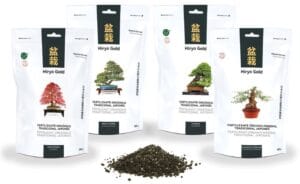How to care your bonsai in Spring
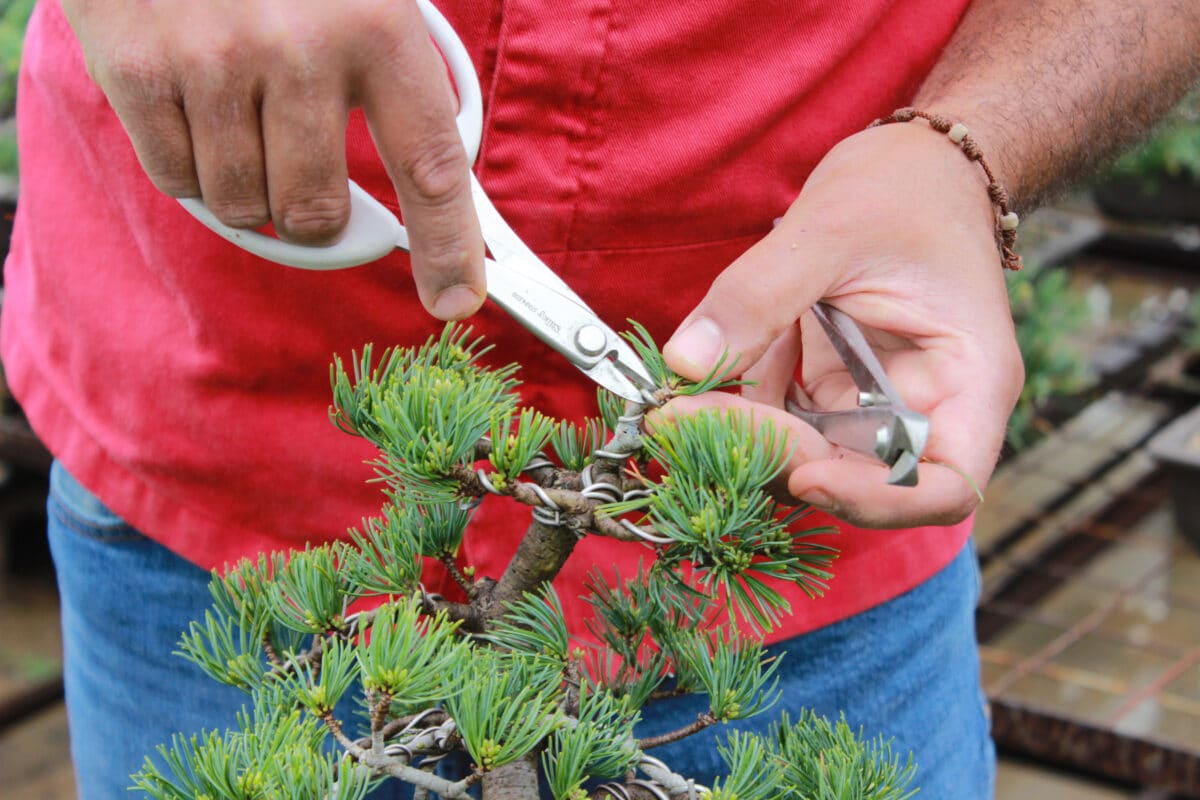
We are back in Spring, the season that we all have been waiting for. Nature restarts growing up and brings us some tasks to do with our indoor and outdoor bonsais. Here we tell you how to care your bonsai in Spring.
Your tree wakes up in Spring
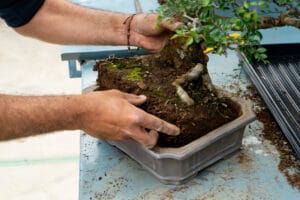
Remember that the deciduous ones are the first to be transplanted. We will do it when the buds are growing, just before sprouting.
Only healthy trees should be transplanted. We will leave the ones that are not at their best until they have recovered, we will wait for the next season.
With tropical and subtropical trees, like Ficus, Serissa or Carmona, we should delay the transplant till the end of Spring, thus we take advantage of their later awakening.
So, we will transplant first the deciduous trees, then the evergreens, after that the conifers and the latest will be tropical and subtropical ones.
After transplanting, we use Vitabonsai, an organo-mineral liquid fertilizer with an immediate effect that will give an extra boost to our bonsai. In our last blog Special bonsai care after a transplant, we tell you more about the cares after the transplant.
After three weeks, we can fertilize…
Should we fertilize bonsais in Spring?
In this season, we will restart the full fertilizing that we had partially stopped in Winter. As it is a growing and stabilizing time, for the young bonsais, we recommend using a fertilizer rich in nitrogen.
We use Hiryo Gold, a range of fertilizers that follows the Japanese tradition. Hanging on the type and condition of the tree, we will use:
Hiryo Gold maintenance. Its organic iron contents help to keep strength and a bright green colour. Ideal for all species when conditions, like high lime content in the water, make the assimilation of nutrients difficult.
Hiryo Gold flowers and fruits. It avoids substrate degradation and increases the useful microorganisms amount. Its high amount of phosphorus and potassium makes It especially appropriate during flowering and fruiting, by strengthening its roots.
Hiryo Gold Growth and pre-bonsai. Indicated for all kinds of bonsai and pre-bonsai. Its high amount of nutrients, especially nitrogen, helps for a fast and strong growth of the trees, mainly for those in the formation phase.
Hiryo Gold conifers. Indicated for conifers. Its balance between macro-nutrients makes it as appropriate for fast-growing kinds as for slower ones. Thanks to the extra of magnesium it has, it avoids desiccation.
The balance between macro and micronutrients of those specific fertilizers will help your bonsai to grow strongly with full force.
Pinching, wiring and pruning bonsais in Spring
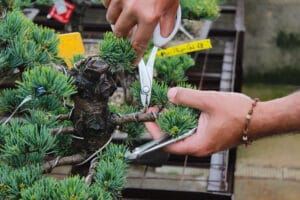
A lot of sap starts to circulate, that allows to bend in a stronger way because the trees are more flexible. You must beware during the wiring not to break branches or cause damage to new buds or new growing branches.
Especially, it is also a good season for pruning. Get rid of the branches you don’t want for your design and leave those you will need in the future.
Remember, if you cut a branch, you stop it growing. Don’t prune a branch if it hasn’t the width you want. Let it grow until it is wide enough for what you need, and then you can prune it. There is no need to let it grow free. During the process, you can wire it in order it get the shape you want for your design.
In addition, as the growing is going on, usually middle Spring, you can pinch your bonsai to get the thin branches and leaves more compact.
Other Spring works for my bonsai
It is also best season to sow seeds. They will have a full cycle to grow and strengthen as seasons will pass.
Spring is a season during which cutting gives a good outcome. Clearly, this technique allows you more formation possibilities for your bonsais, for example getting a branch to grow where we need, get a better nebari or even replicate a rare variety. We make a diagonal cut and use rooting hormones.
Aerial layering and grafting
You can also do aerial layering. That is to get roots out of an interesting branch, or trunk, to separate part of the tree getting a new tree. It is also used to correct the nebari. Commonly used to create bonsais, Shohin or Mame.
This is done from the end of February until June, we don’t recommend doing it in Winter except in the greenhouses. Depending on the type, the time needed to get a layer can be from a couple of months to a year, when it is full of roots.
There are trees like Elms, Maples or Olive which are absolutely easier to layer. On the other hand, conifers used to be much more difficult. Normally, those that reproduce well by cuttings can also be easily layered.
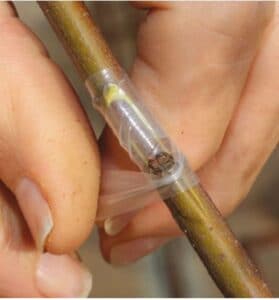
Finally, it is the ideal period to improve our bonsais through grafting. A graft is when we cut a trunk or branch and insert another branch or bud (between branches of the own tree, of different trees of the same species or between different species) . It extends a lot the formation possibilities for our bonsais, for example growing a branch where we need, improving the nebari or reproducing a rare variety.
Preventive phytosanitary cares in Spring
As the weather gets milder, some unwanted guests could appear, it is important to be careful. However, with the high temperatures, we might not be able to avoid it.
So we recommend using a triple action product (acaricide, insecticide and fungicide) as a preventive way at the beginning of the season.
As we have seen, there are a lot of things to do and prepare when Spring comes. Now you know how to care your bonsai in Spring, so get organized to enjoy your trees.
Categories
Bonsai cultivation and care (60)
Bonsai gift (2)
Bonsai pests and diseases (7)
Bonsai repotting (3)
Bonsai species (1)
bonsai substrates (2)
Bonsai summer (1)
bonsai tools (1)
Bonsai work (13)
Ceramic pots (3)
Chinese culture (2)
Chinese culture (1)
Coniferous bonsai (2)
Conifers (1)

